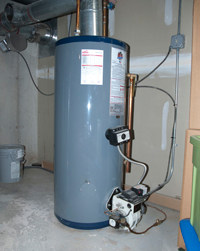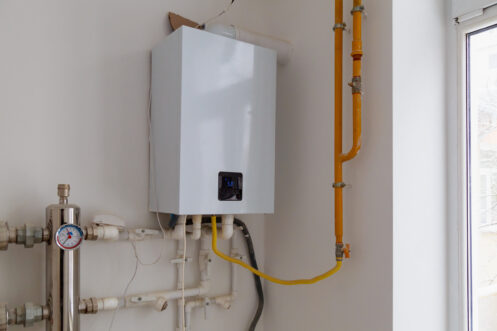What're your ideas regarding How to Maintain Your Water Heater & Prolong its Life?

Warm water is vital for daily convenience, whether it's for a rejuvenating shower or cleaning meals. To ensure your hot water system runs effectively and lasts longer, regular maintenance is vital. This write-up provides sensible ideas and understandings on exactly how to preserve your home's warm water system to prevent interruptions and expensive repair work.
Introduction
Maintaining your home's warm water system could appear overwhelming, yet with a couple of basic steps, you can guarantee it operates smoothly for years ahead. This overview covers whatever from understanding your hot water system to DIY maintenance tips and recognizing when to call specialist aid.
Value of Keeping Your Warm Water System
Regular upkeep not just prolongs the lifespan of your hot water system however likewise ensures it runs effectively. Neglecting upkeep can result in decreased performance, higher energy expenses, and even early failing of the system.
Indications Your Hot Water System Demands Upkeep
Knowing when your warm water system needs focus can stop major issues. Keep an eye out for indications such as inconsistent water temperature, unusual noises from the heating system, or rustic water.
Flushing the Hot Water Heater
Flushing your hot water heater eliminates sediment buildup, boosting performance and extending its life.
Checking and Changing Anode Rods
Anode rods protect against corrosion inside the container. Checking and replacing them when worn is essential.
Facility Issues Calling For Professional Assistance
Instances include significant leaks, electrical troubles, or if your water heater is continually underperforming.
Routine Specialist Maintenance Conveniences
Professional upkeep can consist of extensive examinations, tune-ups, and ensuring conformity with safety requirements.
Evaluating and Adjusting Temperature Setups
Adjusting the temperature setups makes certain optimum efficiency and safety.
DIY Tips for Maintenance
You can carry out a number of maintenance tasks yourself to keep your warm water system in top condition.
Checking for Leakages
Frequently examine pipes and links for leakages, as these can bring about water damages and greater costs.
Recognizing Your Warm Water System
Prior to diving into maintenance tasks, it's valuable to understand the basic parts of your hot water system. Generally, this consists of the water heater itself, pipes, anode poles, and temperature level controls.
Regular Monthly Maintenance Tasks
Regular monthly checks can aid capture minor issues prior to they intensify.
Evaluating Pressure Alleviation Valves
Checking the pressure relief valve guarantees it works correctly and prevents too much pressure buildup.
Shielding Pipelines
Insulating warm water pipes reduces warmth loss and can save energy.
When to Call a Specialist
While DIY maintenance is advantageous, some concerns need professional experience.
Conclusion
Normal upkeep of your home's warm water system is vital for performance, longevity, and expense savings. By following these ideas and knowing when to look for expert assistance, you can make sure a reliable supply of warm water without unanticipated interruptions.
How to Maintain an Instant Hot Water Heater
Before tinkering with your hot water heater, make sure that it’s not powered on. You also have to turn off the main circuit breaker and shut off the main gas line to prevent accidents. Also turn off the water valves connected to your unit to prevent water from flowing into and out of the appliance. 2. When you’re done, you have to detach the purge valves’ caps. These look like the letter “T” and are situated on either side of the water valves. Doing so will release any pressure that has accumulated inside the valves while at the same time avoid hot water from shooting out and burning your skin. 3. When the purge valves’ caps are removed, you have to connect your hosing lines to the valves. Your unit should have come with three hoses but if it didn’t, you can purchase these things from any hardware or home repair shops. You can also get them from retail stores that sell water heating systems. Read the user’s manual and follow it to complete this task properly. When the hosing lines are connected, open the purge port’s valves. 4. You should never use harsh chemical cleaners or solutions when cleaning your unit. Make use of white vinegar instead. It should be undiluted and you’ll probably use about 2 gallons. 5. Now flush your water heater. This task should probably take about 40 minutes. We can’t give you specific directions for this because the procedure is carried out depending on the type, model and brand of your heater. With that being said, refer to the user’s manual. 6. When you’re done draining the unit, you have to turn off the purge port valves again. Remove the hosing lines that you earlier installed on each of the water valves. Put the valve caps (purge port) back in their respective places and be very careful so as not to damage the rubber discs that are found inside these caps. 7. Now that everything’s back in place, check your user’s manual again to find out how to reactivate your water heating system. 8. Once it is working, turn one of your hot water faucets on just to let air pass through the heater’s water supply pipes. Leave the tap on until water flows smoothly out of it. https://www.orrplumbing.com/blog/2014/september/how-to-maintain-an-instant-hot-water-heater/

I recently found that post about What Kind of Maintenance Do Water Heaters Need? while scouting around the internet. Sharing is caring. Helping people is fun. We treasure your readership.
Browse Our Site